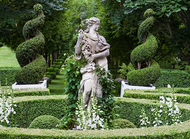Jan 10th 2020
5 Tips for Selecting Garden Statuary
Selecting a new piece of statuary for your garden is like selecting artwork for your home. Find a piece that you love because you will want to enjoy it as a main focus in your garden. It must have the right characteristics to complement and add beauty to your outdoor space, while pleasing your personal style preference. As you begin to review and select the perfect statuary to enhance your property, you will want to consider several key factors. What style would work best in your garden? What material is most suitable? What size and location would be optimal to enhance your garden? Find a guide to these and more considerations below as we share our tips for selecting garden statuary.
1. Style
Statuary can be found in every form of shape, size, and style imaginable. The key considerations when selecting a stylistic direction for your statuary are the style of your home and garden and your personal preference. The simplicity and smooth finish of Geometric, Art Deco, Abstract, and Asian styles are well suited for contemporary and midcentury home and garden settings. Classical styles, such as highly ornamented human figures, majestic animals, and classical motifs work well with traditional homes and the classic garden settings.
Within the broad styles, one can find statuary of every theme and design within our product line. Find what appeals to you personally and keep in mind how you’d like to present your space. Is there a story to tell? Or a theme for your garden? Our statuary runs the gamut of classical, abstract, realistic, fanciful, casual, religious, and more. Choose from mythological characters, cheerful cherubs, fanciful unicorns, frolicking frogs, dancing bears, human figure in many forms, and truly a complete range of the animal kingdom!
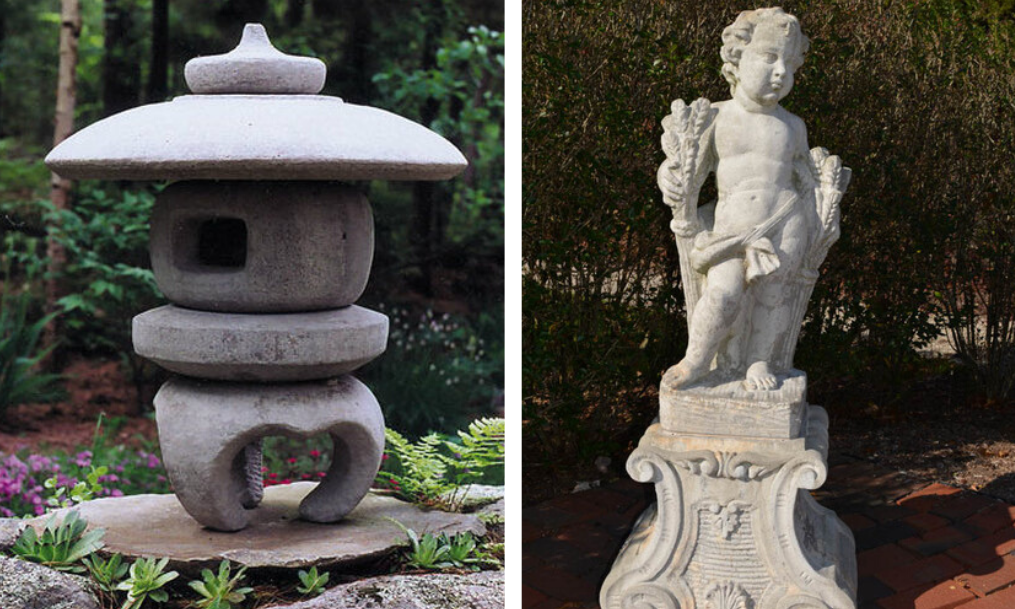
Japanese Lantern and the Four Seasons Cherub
2. Material
Statuary can be created from a number of different materials, including stone, cast stone, plaster, concrete, metal, and clay. Our statuary line includes pieces made of these key materials: cast stone, lead, and bronze. Be sure to take your geographic location and climate into consideration when choosing statuary. In colder climates, durability of materials is critical. We have successfully produced thousands of highly durable pieces through our cast stone formulation, which has been developed to include a high ratio of Connecticut white limestone, sand, and cement. This high ratio of limestone aggregate makes our cast stone material suitable for all climates and all seasons. Another popular material, lead statuary is a stunning addition to any private garden. Several styles, such as our 20th century English statuary, are typically cast in lead. These are smaller figures and tend to feature cherub-like features with high ornamentation. Bronze pieces are another great choice, as they are universally the most durable material for garden ornamentation. We have a select few items beyond our sundials, which are available in bronze.
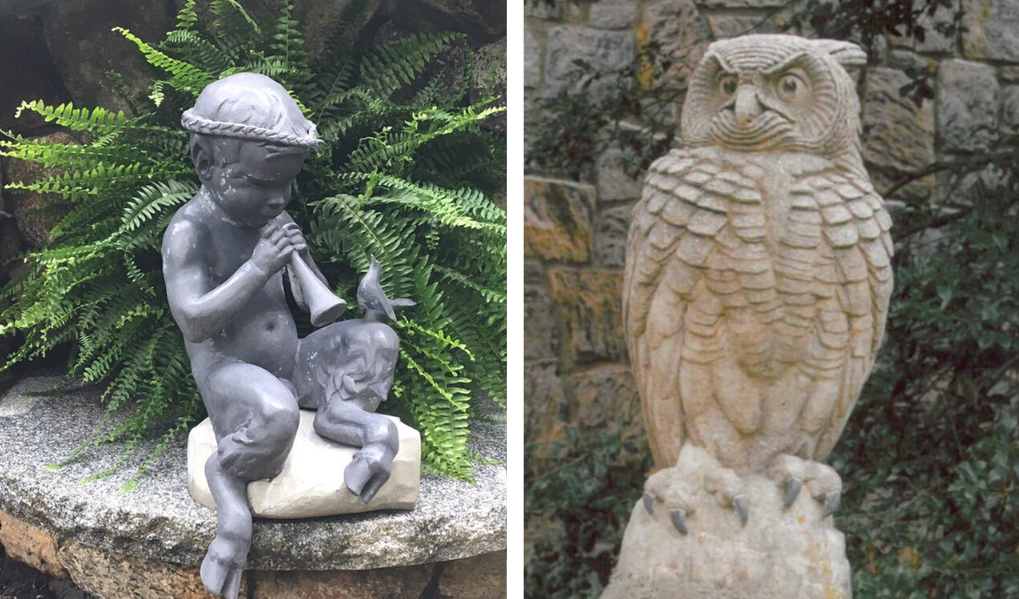
Pan with Horn (Lead) and the Great Sentinel Owl (Cast stone with lead beak and talons)
3. Size
One of the most important factors to take into consideration when choosing garden statuary is size. The size of your selected piece should be determined by the size of your garden. A piece too large or too small can have an overwhelming or underwhelming effect respectively, creating a sense of unbalance in your outdoor space. Be thoughtful about your garden space and how a piece of statuary can help enhance it, how its surroundings and other garden elements will help showcase its beauty. While large statues are ideal for creating a strong focal point, smaller statues are often used to create accents within close-up settings and “rooms” of your garden. Smaller statues also bring the element of pleasant surprise as they are discovered among greenery and flowers while walking through the garden.
4. Location
Siting your garden statuary is key. The right placement can make the difference between whether your new addition to the garden adds value or throws off the flow and balance of your outdoor space. In order to find the best location, consider the immediate surroundings of where you’d like to place your statue. Are there any existing trees, plants, bushes, or hedges? If so, make sure the existing elements of the location will not block or overwhelm the statue as your new piece should be showcased, not obstructed. Placing a garden statue amongst flowers or in the center of a formally structured parterre garden will help create a sense of prominence and make a statue stand out in contrast to the bright colors and greenery. For dramatic effect, you can position the statue at a destination point at the end of a walkway or allee of trees. Also consider including a garden bench to provide a vantage point from which to admire your statuary.

Atlas with Sundial provides a focal point at the end of a walkway. The Four Seasons Statue among flowers.
5. Groupings
Grouped placement of statues adds a dramatic effect to the garden. A pair of statues flanking a stairway or path creates drama and rhythm in the garden. And a pair of statues flanking a front door add the ultimate curb appeal. Statuary in groups can be used to create visual boundaries in a garden, whether along the perimeter or grouped in corners. One of our most popular statuary groupings is the Four Seasons series, which helps remind us that every season has its own way of enhancing our outdoor space! The Four Seasons Statues are a great collection to use in a group or sited at the four corners of a garden room. As with artwork in a gallery, adding to the statuary over time lets you create your own personal collection to enhance your garden.
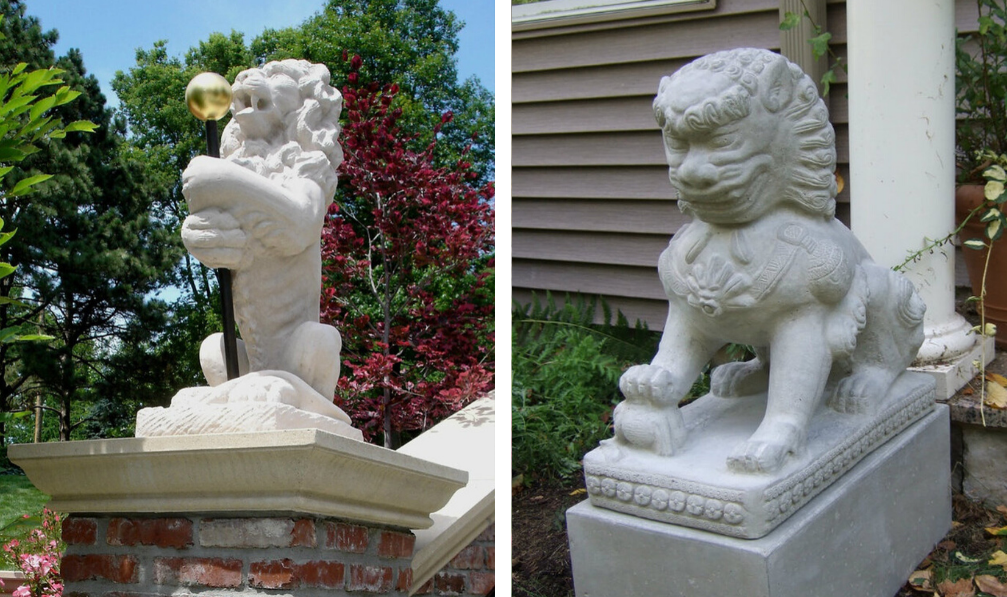
Lions with Orbs flanking an outdoor stairway and the Foo Dog stands guard beside the front door
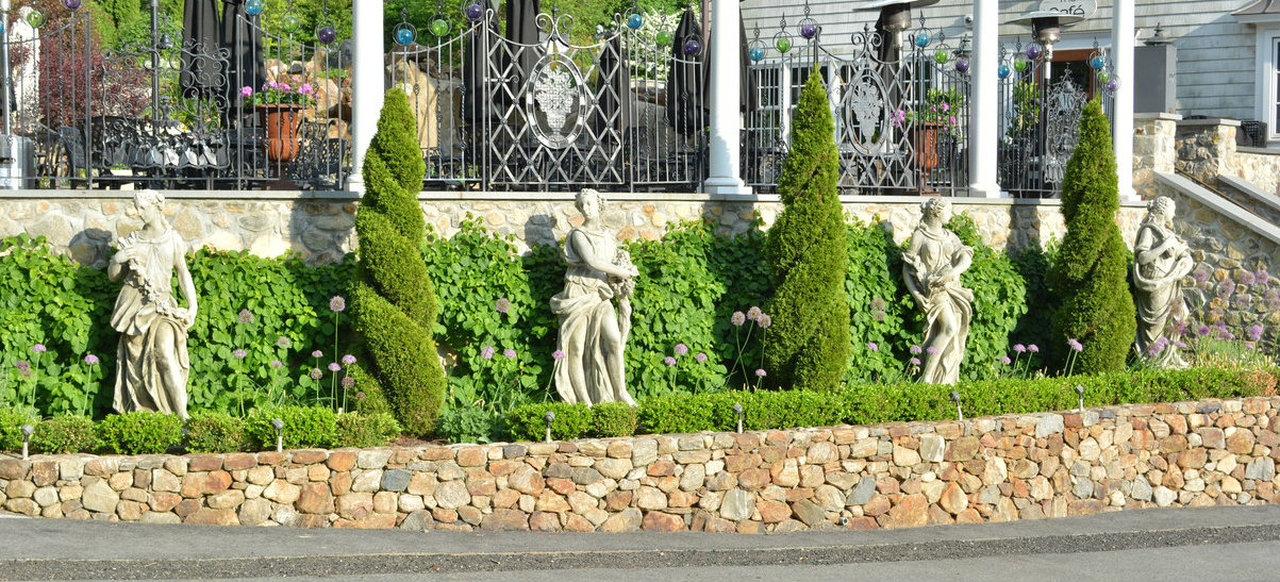
Classical Four Seasons Statues
For more inspiration, Explore our statuary
Do you have questions about selecting the perfect statue for your garden? Contact our Customer Service
